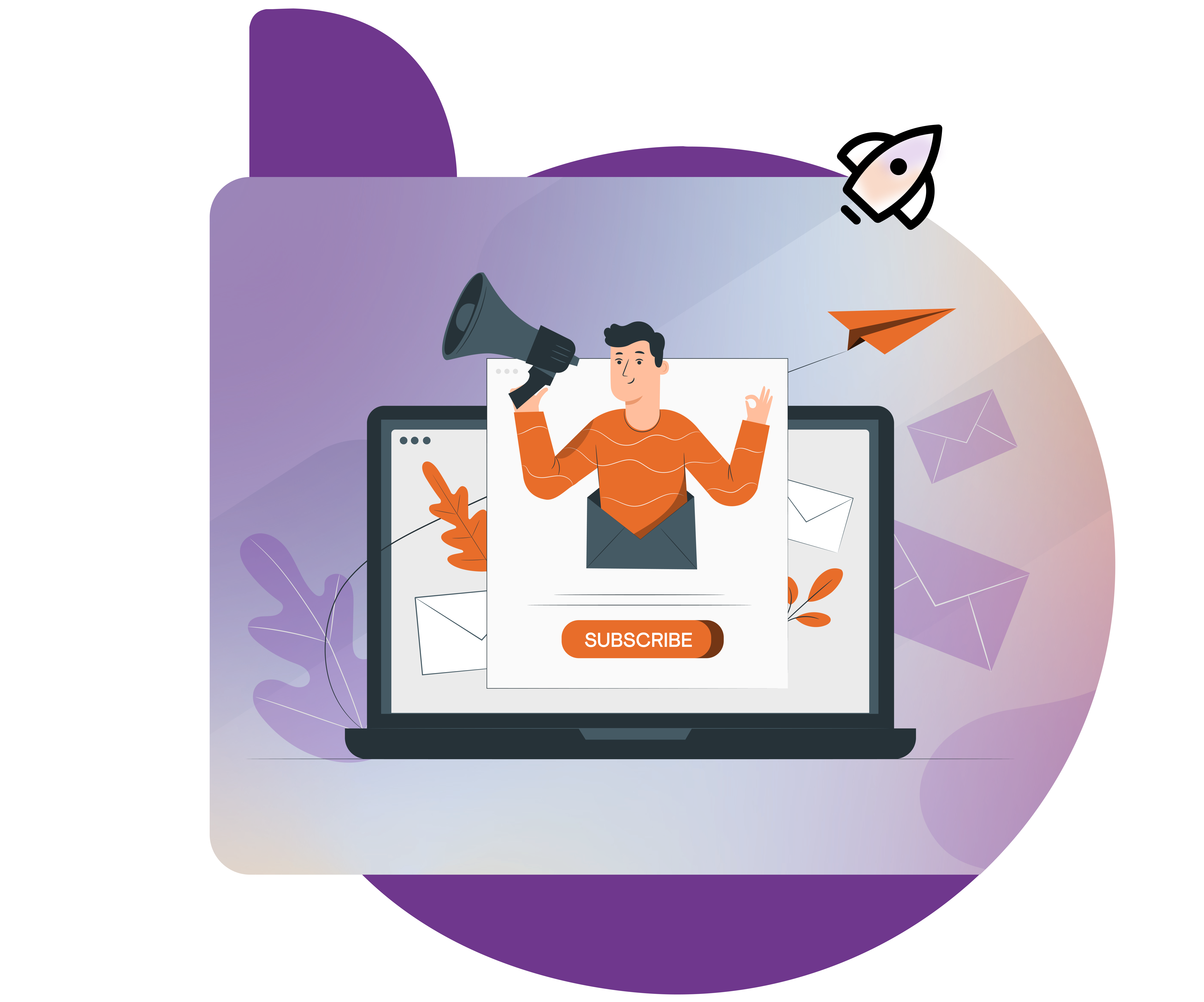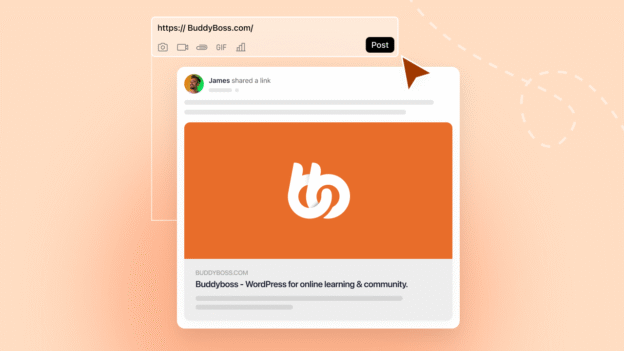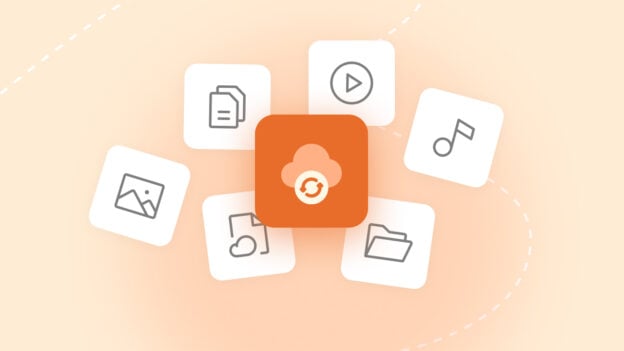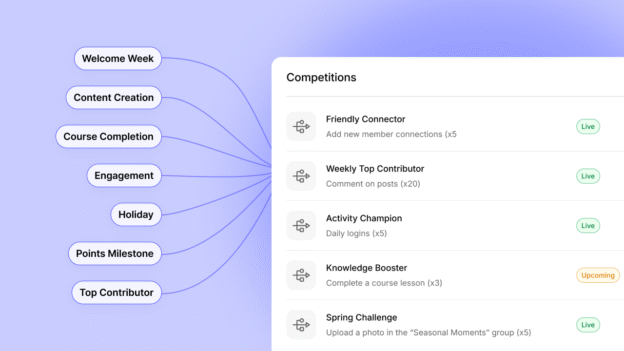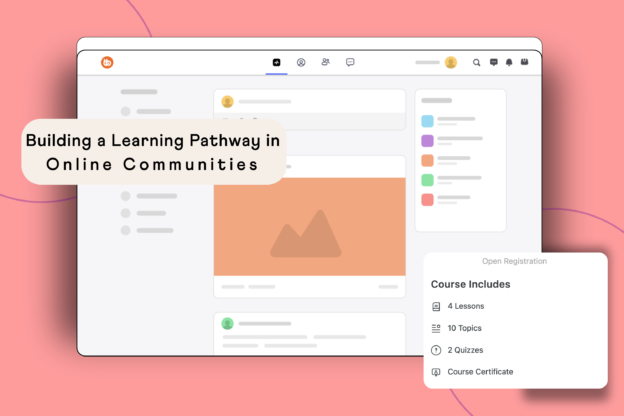Email marketing remains one of the most effective ways to nurture relationships, drive engagement, and convert prospects into loyal members.
You could be managing a membership site, creating an online course platform or building an online community, creating the right email sequence can really change your business growth.
In this post, I’ll break down everything you need to know about email marketing sequences; from understanding what they are, to exploring different types, and finally sharing step-by-step guidance for creating, optimizing, and scaling them. By following expert advice and proven best practices, you’ll be well on your way to designing campaigns that build trust and authority while delivering real value.
- What Exactly Are Email Sequences?
- Why Are Email Sequences Important?
- Types of Email Sequences for Online Communities and Membership Sites
- Crafting Your First Email Sequences: A Step-by-Step Guide
- Strategies for Sales and Prospecting Sequences
- Optimizing Email Sequences for Higher Conversions
- Some Tools & Resources For Effective Email Marketing Sequences
- Lastly,
- Subscribe to Our Newsletter For More Insights!
What Exactly Are Email Sequences?
An email sequence is a series of automated emails sent in a predetermined order to guide your audience through a specific journey. It answers the basic question: What is an email sequence? At its core, it’s a roadmap that nurtures your subscribers—educating them about your offerings, building trust, and gradually leading them towards a conversion.
For example, when you sign up for a free trial, you might receive a welcome email followed by a series of messages that explain how to get started, highlight key features, and share customer success stories.
This is a typical onboarding email sequence. Similarly, a sales sequence might begin with an introduction to the product, then move on to share case studies and special offers, eventually guiding you toward making a purchase.
Why Are Email Sequences Important?
Email sequences are important because they provide a structured, automated way to nurture your audience over time. They help build trust and credibility by consistently delivering valuable, tailored content that guides subscribers through every stage of their journey—from initial awareness to becoming engaged community members or customers.
Research shows that automated email campaigns can generate click-through rates that are up to 119% higher than non-sequenced emails, and companies using these strategies often see conversion rates three to four times greater.
Moreover, email marketing delivers an impressive return on investment—with data from the Data & Marketing Association (DMA) indicating that for every dollar spent, businesses can expect an average ROI of $42.
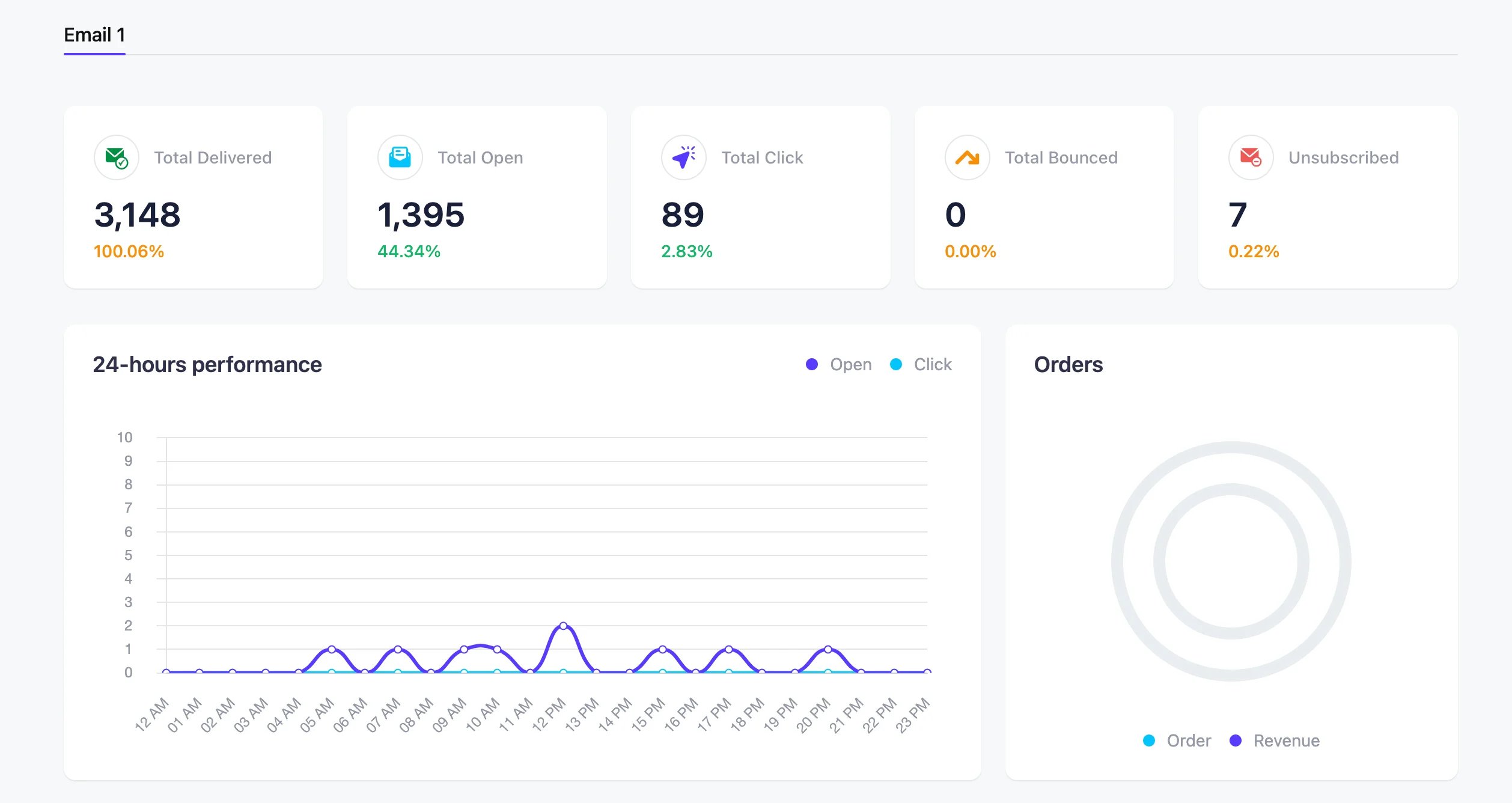
This approach ensures that communication is not only timely and relevant but also highly targeted. By leveraging data-driven segmentation, email sequences deliver personalized content that meets subscribers’ needs at the precise moment they’re most receptive.
For instance, personalized onboarding emails have been shown to boost user engagement by over 50%, because they speak directly to the recipient’s interests and challenges.
Consistent delivery of valuable, tailored content builds trust and credibility, with studies revealing that 80% of consumers are more inclined to purchase from brands that offer personalized experiences.
Despite their automated nature, well-crafted email sequences maintain a personal touch that fosters long-lasting relationships, ultimately driving customer retention and sustainable growth.
Types of Email Sequences for Online Communities and Membership Sites
There are several types of email sequences that work exceptionally well for online communities and membership sites. These sequences are designed to guide your audience through their journey with your brand, ensuring they feel welcomed, engaged, and valued at every step. Here’s a more detailed look:
1. Onboarding Sequences
What They Are:
Onboarding sequences are the first series of emails sent to new subscribers. Their primary goal is to welcome and orient new members, helping them quickly understand the value of your community or membership site.
Key Components:
- Welcome & Introduction: A friendly greeting that sets the tone and expresses gratitude for joining.
- Getting Started Guides: Step-by-step instructions or tutorials on how to navigate your platform, access resources, or engage in community discussions.
- Tips & Best Practices: Insights on making the most out of their membership, including common FAQs or useful tricks.
- Social Proof & Engagement: Testimonials or success stories from other members that build trust and encourage participation.
Best Onboarding Sequence Examples:
- Mailchimp’s Welcome Series: When a user signs up, Mailchimp sends a series of emails that not only welcome the user but also provide helpful tips to get started with the platform’s features.
Take a look at Mailchimp’s Welcome email:-
- Slack’s Onboarding: Slack’s onboarding sequence guides new users through setting up their profile and understanding the platform, using clear instructions and interactive tips.
This is what Slack’s initial onboarding email:-

- Duolingo’s Onboarding: Duolingo uses a friendly, motivational sequence that includes encouragement, reminders, and personalized tips to help users establish a daily learning habit.
Duolingo’s email gives a light and clean look because of the generous spacing and the green owl keeps the fun in place:-

Try BuddyBoss for Membership Site
Create a membership site with forums, courses, and engagement tools—without the tech overwhelm.
2. Engagement/Re-Engagement Sequences
Purpose:
These emails are designed to keep your audience active over time or re-engage members who have become inactive. They can include updates about new community features, interactive content, or personalized incentives to reignite interest.
Example:
A community forum might send periodic emails highlighting the most popular discussions, upcoming events, or exclusive content that encourages members to log back in. Check below how Duolingo does the best engagement email sequence to keep you hooked and coming back for more:-

This We Miss You email presents the personalization of an email, when you send an email with the subject popping up as if it’s your friend’s text.
3. Sales & Conversion Sequences
Purpose:
Sales sequences are aimed at converting prospects into paying members. They provide persuasive messaging that addresses common objections, offers social proof, and includes compelling calls-to-action.
Example:
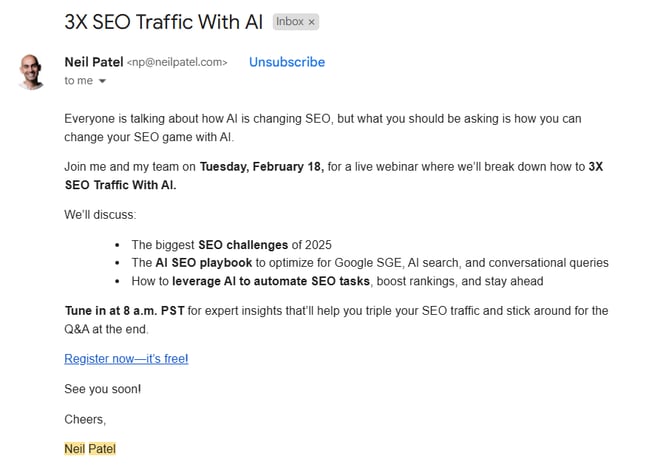
Explanation:- A webinar sign-up sequence might start with an invitation to a free event, followed by educational content that underscores the benefits of the membership, and conclude with an exclusive offer to join.
4. Prospecting Sequences
Purpose:
These sequences target potential new members by initiating contact with personalized, value-driven emails that showcase the benefits of your community. They are often the first touchpoint with someone who hasn’t yet experienced your brand.
Example:
A free trial campaign could include a series of emails that gradually introduce the platform’s features and invite the prospect to explore premium content.
5. Educational/Value-Addition Sequences
Purpose:
These emails are designed to nurture your audience by providing ongoing value through educational content. They help position your brand as an authority in your niche.
Example:

Explanation:- A weekly newsletter that shares industry insights, how-to guides, and case studies can keep your members informed and engaged, encouraging continuous learning and participation.
6. Renewal & Retention Sequences
Purpose:
For membership sites, retention is key. Renewal sequences remind members of upcoming subscription renewals, highlight new features or benefits, and offer incentives to continue their membership.
Example:

Explanation:- A series of reminder emails sent a few weeks before the membership renewal date, possibly combined with a special discount or an exclusive sneak peek at new content, can help boost retention rates.
Crafting Your First Email Sequences: A Step-by-Step Guide
Creating effective email sequences requires a blend of strategy, creativity, and technical know-how. Here’s a step-by-step guide:
- Plan Your Sequence:
Map out the customer journey from the first sign-up to conversion. Identify key touchpoints and segment your audience based on their behavior or interests.
[Sign-Up / Awareness]
▼
[Welcome & Onboarding]
▼
[Engagement]
▼
[Conversion]
▼
[Retention & Advocacy]
If you are planning to build an online community then this table can help you Plan your Email Marketing Sequences pretty effectively just make sure you know who you are targeting:-
| Stage | Motto | Touchpoints | Action & Goals | Audience Segments |
| 1st | Sign up/Awareness | Registration form via social media, blog, or referrals | Capture basic details (name, emails, interest)- Introduce your community subtly | New Subscribers: Those who just signed up |
| 2nd | Welcome & Onboarding | – Welcome email- Introductory video or quick-start guide | – Provide a warm welcome – Introduce key features and community areas- Set expectations | – New Subscribers- Interest-based groups: based on captured interests |
| 3rd | Engagement | – Follow up emails – Invitations to webinars or forums | – Deliver personalized content recommendations – Highlight active discussions and community highlights | – Active Participants: Engaged users- Dormant user: Who need re-engagement |
| 4th | Conversion | – Targeted emails with special offers – Testimonials | – Present clear CTAs – Offer incentives for premium membership or paid events | – High-value prospects: Highly engaged users – Conversion ready users: Interested but not yet converted |
| 5th | Retention & Advocacy | -Post-conversion follow-ups- Loyalty rewards and surveys | – Maintain ongoing engagement- Provide exclusive content- Encourage referrals and collect feedback | Loyal Members: Regular, active users- At-Risk Members: Users showing signs of disengagement |
2. Content Creation
Subject Lines: Your subject line is the first impression your email makes—it’s the hook that convinces subscribers to open your message. To craft attention-grabbing subject lines, consider these strategies:
Aim for 5–7 words that quickly communicate the core message. Avoid ambiguity; your readers should know what to expect when they click. Here are some examples to help you understand this-
‘Join Our Community Today’ Simple and direct—invites the reader to become part of the community immediately.
‘Unlock Your Exclusive Perks Now’ Creates urgency and promises specific benefits without extra words.
‘Welcome! Let’s Get Started’ Warm and inviting, setting the stage for a great beginning.
‘Discover Your Next Big Win’ Engaging and inspirational, suggesting the reader will achieve something valuable.
‘New Guide: Boost Your Engagement’ Clear about what’s inside—perfect for a quick, actionable read.
Incorporate the recipient’s name or reference their interests. Personalized subject lines can significantly boost open rates by making the email feel tailor-made. Take a look at the examples below-
– John, Your Special Perks Are Here!
– Anna, Unlock Your Exclusive Offer Now
– Hi Sarah, Discover Fresh Travel Ideas
– Hey Alex, Check Out Your Fitness Update
Use language that sparks curiosity or implies urgency. Phrases like “Last chance,” “Exclusive offer inside,” or “Unlock your secret…” prompt immediate action.
Tap into the reader’s emotions. Whether it’s excitement, anticipation, or even a hint of mystery, engaging emotions can drive higher open rates.
Regularly perform A/B tests with different subject lines to see which versions resonate best with your audience. Analyze open rates and tweak your approach based on the data. For example you send Subject A (“Unlock Your Exclusive Perks Now”) to half your audience and Subject B (“Discover Your Special Offer Today”) to the other half. After analyzing the open rates, you find that Subject B achieved a 22% higher open rate. This insight helps you understand your audience’s preferences and informs future subject line choices.
Crafting a Personalized Email Body: The email body is where you deliver on the promise of your subject line. It should be engaging, valuable, and deeply personalized. Open with a friendly salutation that uses the recipient’s name. A personal touch can create an immediate connection.

Weave storytelling into your content. Share relatable anecdotes or case studies that highlight how your community or product has made a positive impact. A well-told story not only captivates but also helps your reader see the practical benefits of what you offer.
Clearly articulate the benefits of your offering. Instead of merely listing features, explain how your service or community can solve a problem or improve the reader’s life. Use bullet points or numbered lists to make key benefits stand out.
Leverage data and insights about your subscribers to tailor the message. Segment your audience and address their specific needs or pain points. This could involve dynamic content blocks that adjust based on the recipient’s interests.
Incorporate headings, subheadings, images, or infographics to break up text and make the content more digestible. A visually appealing layout can keep the reader engaged from start to finish.
Write as if you’re speaking directly to a friend. A conversational tone fosters trust and makes the email more relatable.
Designing Clear and Effective Calls-to-Action (CTAs): Every email should guide your reader toward the next step. Be Direct and Action-Oriented: Use strong, actionable language like “Join Now,” “Discover More,” or “Get Started Today.” Your CTA should leave no doubt about what the reader is expected to do next.
Position your CTA prominently within the email. Use contrasting colors, bold text, or buttons to make it stand out. Consider placing the CTA both in the middle and at the end of the email to capture attention at different reading points.
Keep your CTA simple. It should be a single, clear instruction that tells the reader exactly what to do. Avoid multiple CTAs that might overwhelm or confuse the recipient.
Tie your CTA back to the benefits discussed in the email. For example, if you’re offering an exclusive webinar, your CTA could be “Reserve Your Seat for Exclusive Insights.”
As with subject lines, experiment with different CTA styles, placements, and wording to see which version drives the best conversion rates.
3. Design & Automation:
When it comes to email marketing Sequences, both design and automation play pivotal roles in ensuring your messages not only look great but also perform effectively. Let’s break down the best practices for email design, layout, and mobile responsiveness, followed by an overview of popular automation tools to manage your email sequences.
Use a clean, uncluttered layout that guides the reader’s eye naturally through your content. A simple design reduces distractions and helps emphasize your key messages and CTAs.
Ensure that your emails reflect your brand’s visual identity. Use your brand’s colors, fonts, and logo consistently to create a cohesive experience. This consistency builds trust and reinforces your brand recognition.
Over half of emails are now opened on mobile devices, so it’s essential that your emails automatically adjust to different screen sizes. Use responsive design techniques—such as fluid grids and flexible images—to ensure your content looks great on both desktop and mobile.
Keep your font sizes legible and your buttons large enough for mobile users. For instance, using at least 14px for body text and ensuring your CTAs are easily tappable can improve click-through rates significantly.

Use headings, subheadings, bullet points, and images to break up long blocks of text. This helps readers quickly scan the content and understand your message.
Position your CTAs prominently within your email layout. Use contrasting colors and ample whitespace around them to make them stand out and guide the reader toward the desired action.
Lastly, always test your emails on different devices and email clients (such as Gmail, Outlook, and Apple Mail) to ensure that your design and layout are rendered correctly across the board.
Regularly experiment with different design elements—like subject lines, CTA placements, and image choices—to see what resonates best with your audience. This continuous improvement approach can boost both open and click-through rates.
Strategies for Sales and Prospecting Sequences
- Creating a Sales Sequence
A well-crafted sales sequence guides your subscribers from initial interest to taking decisive action. Here are the key elements:
Segment Your Audience: Identify which subscribers are most likely to convert. For example, research by Mailchimp shows that segmented email campaigns can result in a 14.32% higher open rate and a 100% increase in click-through rates compared to non-segmented ones.
Tailored Messaging: Customize your emails to address the specific pain points and interests of different segments. Personalized messages have been known to increase conversion rates significantly – some studies indicate improvements of up to 20% when messages are tailored to individual needs.
Compelling Offers: Use limited-time offers, exclusive discounts, or special content to prompt action. Urgency can be a strong motivator; for instance, limited-time promotions have been shown to boost sales conversion rates by up to 30% in some campaigns.
Comparison of Sales Strategies: It’s important to distinguish between a “selling sequence” and broader “sales sequencing” tactics. While both require clear communication and strong value propositions, they serve slightly different purposes:
| Aspect | Selling Sequence | Sales Sequencing Tactics |
| Focus | Direct conversion (making a sale) | Nurturing leads over multiple touchpoints |
| Message Tone | Persuasive and direct | Educational, value-driven, and nurturing |
| Frequency | Fewer, high impact emails | A series of emails over a longer period |
| Key Elements | Compelling offer with strong CTA | Building trust through continuous engagement |
| Example Outcome | Immediate purchase or sign-up | Increasing readiness for future conversion |
- Optimizing Prospecting Efforts
Prospecting sequences focus on making a positive first impression and nurturing leads before a sales pitch is introduced:
Personalized Introductions: Craft personalized content that builds rapport from the very first email. Use dynamic data to include the subscriber’s name or reference their interests. This strategy has been shown to improve engagement rates; for example, personalized emails can result in a 26% higher open rate.
Value-Added Follow-Ups: Rather than delivering a hard sell, provide useful insights, educational content, or industry tips. Regular follow-ups that add value help in building trust over time. According to various studies, emails that focus on providing value can improve conversion rates by up to 15%.
Gradual Relationship Building: Begin with a soft introduction and gradually introduce more in-depth content. This approach allows prospects to understand your brand and the benefits you offer without feeling overwhelmed. For example, a well-designed prospecting email sequence might start with a welcome email, follow up with a case study or testimonial, and then introduce a limited-time offer after establishing trust.
Optimizing Email Sequences for Higher Conversions
To ensure your email sequences perform at their best, optimization is key:
- Testing & Analytics
A/B Testing: Regularly experiment with different elements of your emails—subject lines, content formats, imagery, and CTAs. For example, test two subject lines to see if a personalized greeting outperforms a generic one. Many companies report a 15-20% improvement in open rates through systematic A/B testing.
Key Metrics: Track essential performance indicators such as open rates, click-through rates, and conversion rates. For instance, if your open rate is 25% and your click-through rate is 5%, focus on optimizing your subject lines and CTA placement. Using dashboards from tools like Mailchimp or ActiveCampaign can help you pinpoint areas needing improvement.
– image source – HubSpot
- Continuous Improvement
Feedback Loops: Regularly ask for direct feedback from your subscribers via surveys or simple rating systems in your emails. This feedback can uncover hidden friction points or topics of interest, enabling you to adjust your content to better serve your audience’s needs.
Iterative Updates: Use the insights gained from your analytics and feedback to refine your email sequences continuously. For example, if data reveals that emails with video content perform 30% better, consider incorporating more multimedia elements. Stay informed about industry trends and adjust your design, messaging, and scheduling to keep your sequences fresh and relevant.
Some Tools & Resources For Effective Email Marketing Sequences
Leveraging the right tools can make managing your email sequences much easier. Here are some resources to consider:
| Category | Tool/Resource | Features | Best for |
| Email Marketing and Automation | Mailchimp | Customizable templates, automation workflows, comprehensive analytics | Small to medium sized businesses |
| Mailpoet | Seamless WordPress integration, drag-and-drop editor, real-time analytics, and automated email campaigns | WordPress users and small businesses | |
| ConverKit | Advanced tagging, segmentation, personalized messaging | Creators, bloggers, Content-driven businesses | |
| FunnelKit (AM brand) | Funnel creation tools integrated with ConvertKit, streamlined lead capture, and automated email sequences | Online businesses focused on sales funnels and conversions | |
| ActiveCampaign | CRM integration, advanced automation, behavioral tracking, detailed performance analytics | Businesses needing sophisticated automation | |
| HubSpot | Robust email automation, CRM integration, full suite of marketing tools | Larger businesses and enterprises | |
| Klaviyo & Drip | Data-driven segmentation, detailed automation workflows | E-commerce and membership sites | |
| Uncanny Automator (from AM) | Automation tool for WordPress that connects various plugins and apps, enabling automated workflows across your digital ecosystem | WordPress sites looking to streamline operations | |
| Design & Content Creation | Really Good Emails | Curated gallery of high-quality email designs for inspiration | Designers, marketers, and email strategists |
| Canva | Easy-to-use design tool for creating engaging email graphics, banners, and infographics | Marketers and content creators | |
| Litmus | Email testing, previewing, and analytics to ensure design consistency across devices | Ensuring emails look great on all devices | |
| Analytics & Optimization Tools | Google Analytics | Tracks email performance, user behavior, and conversions when integrated with your email platform | Data-driven optimization of campaigns |
| Mixpanel | Advanced tracking and segmentation to understand user interactions and behaviors | In-depth analytics and performance insights | |
| A/B Testing Tools(e.g., Optimizely) | Built-in A/B testing features in many platforms or standalone tools for experimenting with subject lines, CTAs, and content variations | Continuous testing and iterative improvements | |
| Educational Resources & Communities | Marketing Blogs & Webinars | Resources like HubSpot Blog, Campaign Monitor, and Mailchimp Resource Center provide best practices, case studies, and expert insights | Staying updated with industry trends |
| Online Courses (Udemy, Coursera, LinkedIn Learning) | Courses on email marketing strategy, design, and automation to build your skills | Learning and professional development | |
| Email Marketing Forums & Communities sharing ideas, asking questions, and networking | Platforms like Reddit, LinkedIn groups, and specialized forums for sharing ideas, asking questions, and networking | Collaborative learning and staying informed |
Lastly,
Email marketing sequences are powerful tools that build relationships, establish trust, and drive conversions. By understanding the different types of sequences, following a strategic step-by-step approach, and continually optimizing your campaigns, you can create email marketing efforts that resonate with your audience and support the growth of your membership site or online community.
If you’re ready to transform your email marketing strategy, start by implementing these best practices today. Remember, every successful campaign begins with a single, well-crafted email.

